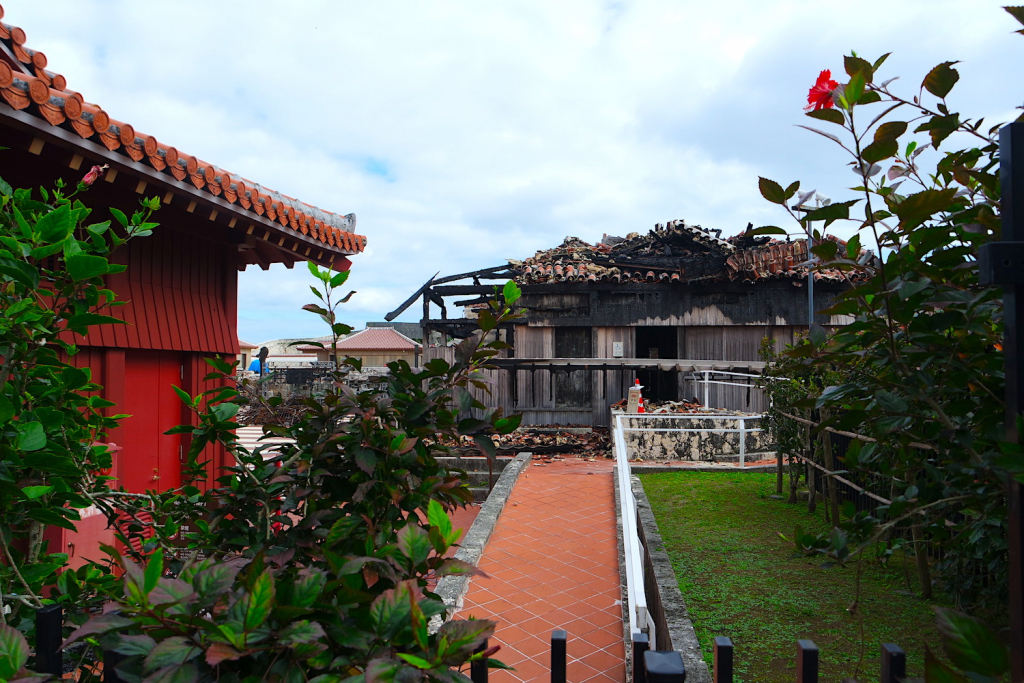Talks of rebuilding Okinawa’s Shuri Castle, a UNESCO World Heritage Site, began soon after the castle burned down on October 31, 2019. It was perhaps the best way to cope with the grief of losing such an essential piece of Ryukyuan history. While grieving for the tremendous loss, the people of Okinawa knew from experience that they had to act fast. The devastating incident on that October night wasn’t the first time the castle complex had been damaged — it was burned down (and rebuilt) in 1453, 1660, 1709 and it suffered its most significant devastation in the war in 1945.
In 2020, restoration efforts are underway, bolstered by sizable donations and a plan to restore the castle’s former glory by 2026.
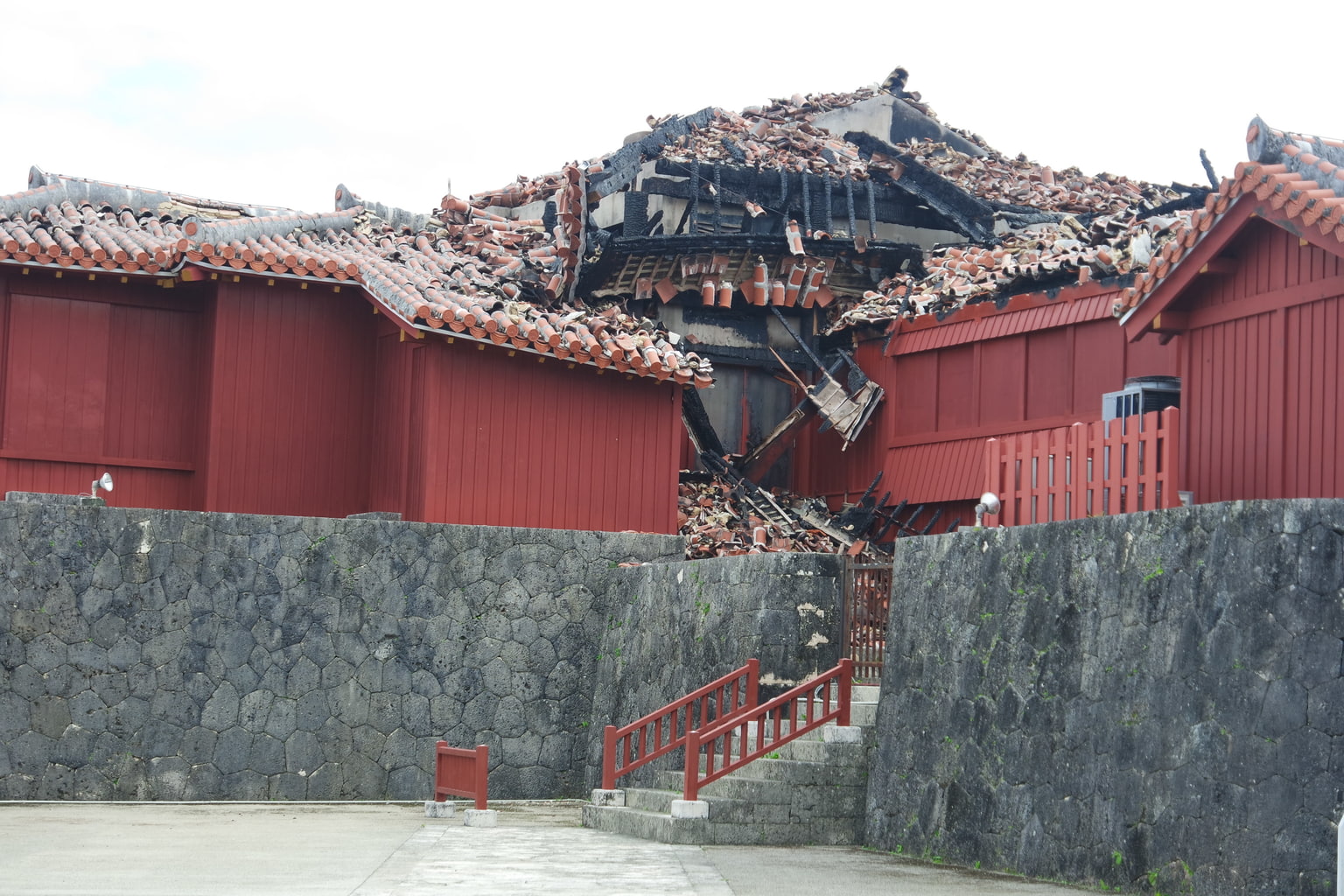
Shuri Castle after the 2019 fire. Photo taken in January 2020
Marking the First Anniversary from the Fire
On the first anniversary of the fire, Okinawa chose to mark the incident by focusing on the castle’s reconstruction. A night reception at Shuri Castle was held on October 29, 2020, tied with the then-ongoing Tourism Expo Japan in Naha. Present at the event were mostly travel professionals and ambassadors, who were greeted by the newly chosen King and Queen, characters played by locals, and the Governor of Okinawa Prefecture, Denny Tamaki.
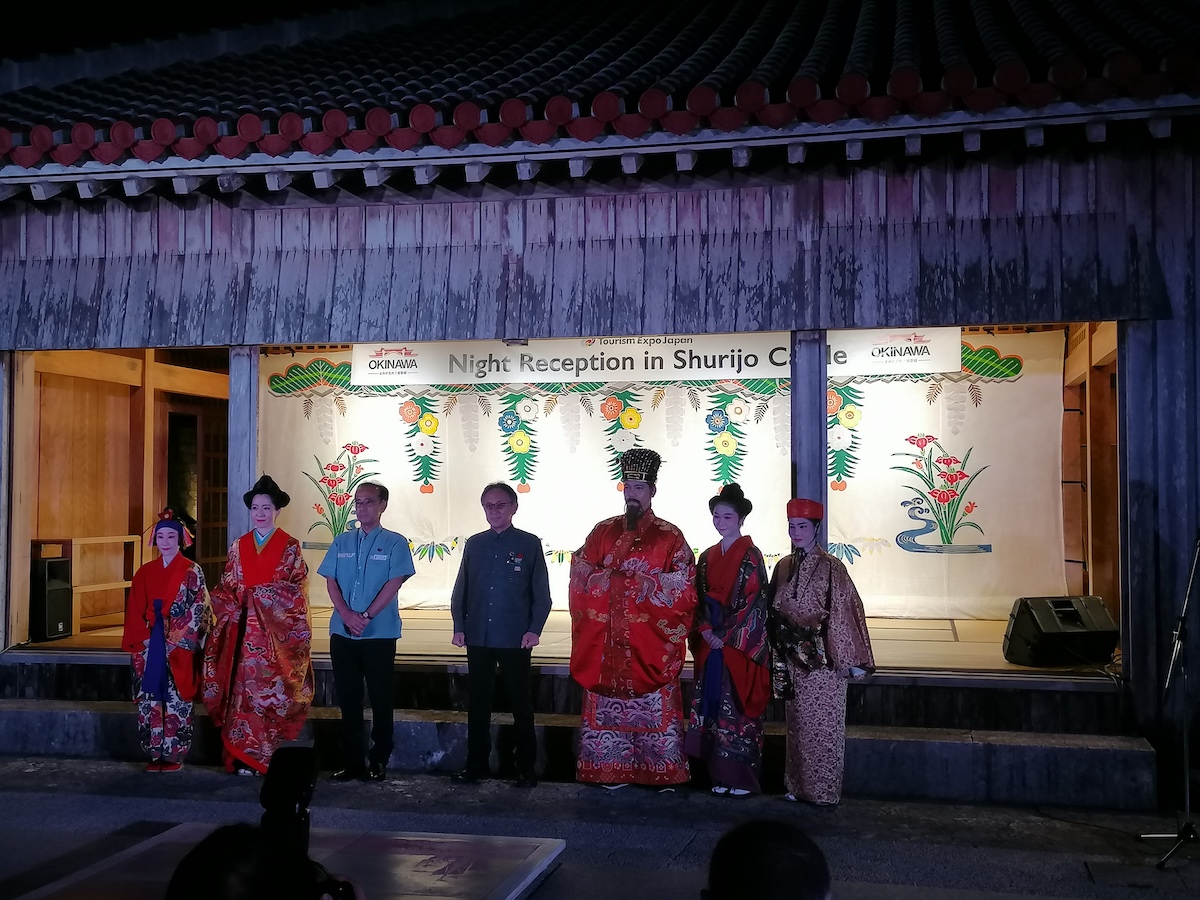
Governor of Okinawa, Denny Tamaki (center) with the newly appointed Ryukyu King and Queen characters at the “Night Reception in Shurijo Castle” event in October 2020.
In his welcome speech, Tamaki thanked the government and everyone who had made donations and had supported the reconstruction project. The entire cost of the reconstruction has not been calculated yet, but so far, donations have reached 5 billion yen.
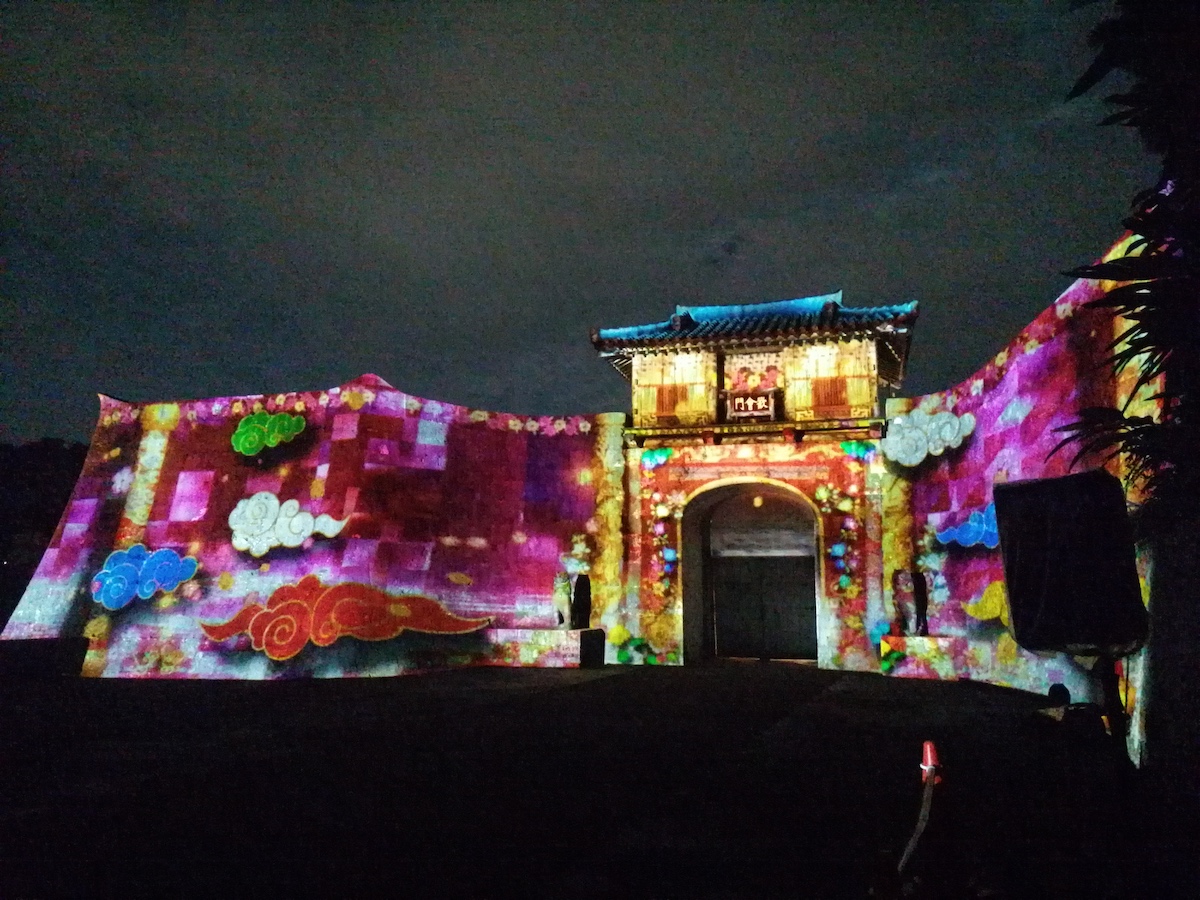
The outdoor event also included a tour of the reconstruction site, traditional performances and projection mapping on the Kankaimon Gate walls. For a limited time from September through November, visitors could also try VR and augmented reality to ‘see’ Shuri Castle in its previous glory before the Main Hall burned down.
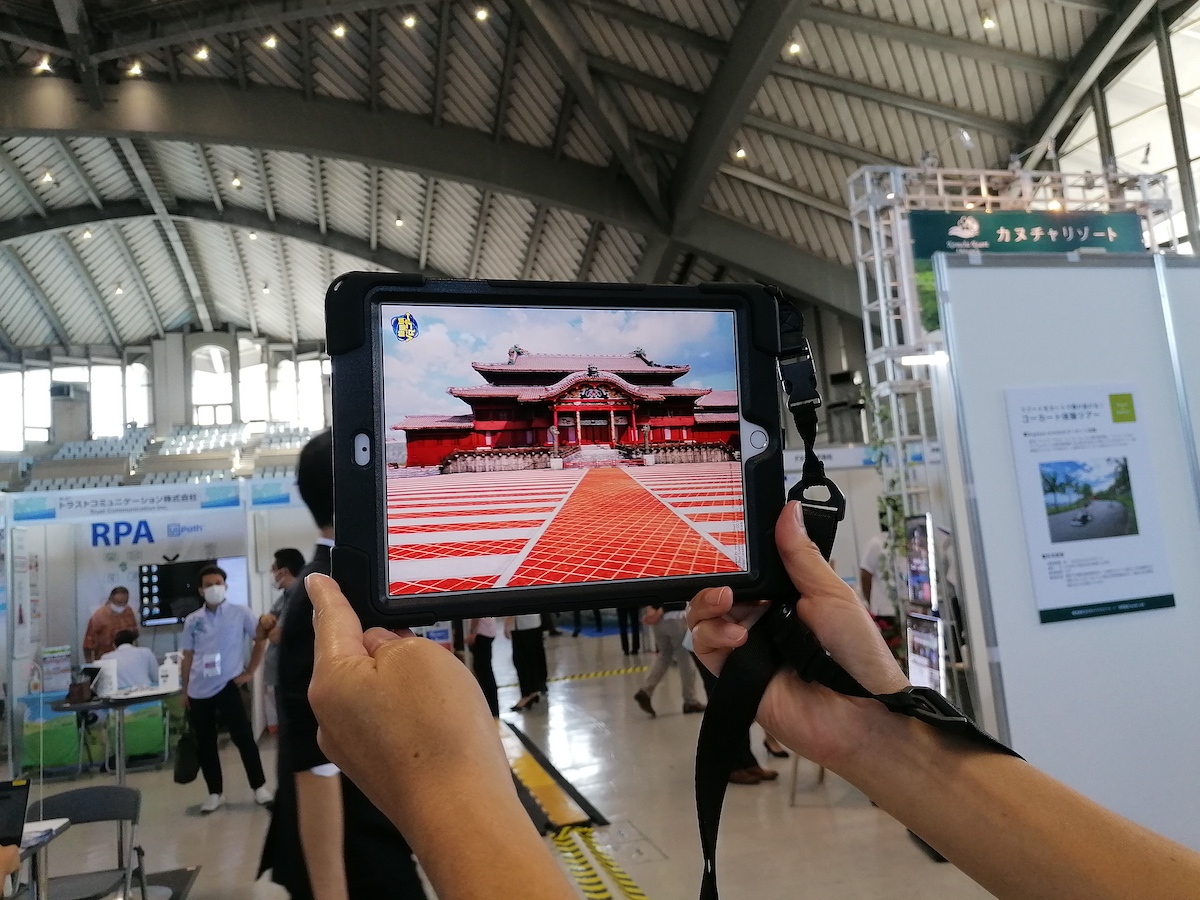
In central Naha, from October 28 through November 15, the famed Kokusai Dori street, a light installation outlining the burned down Shuri Castle Main Hall to signify the hope of its restoration.
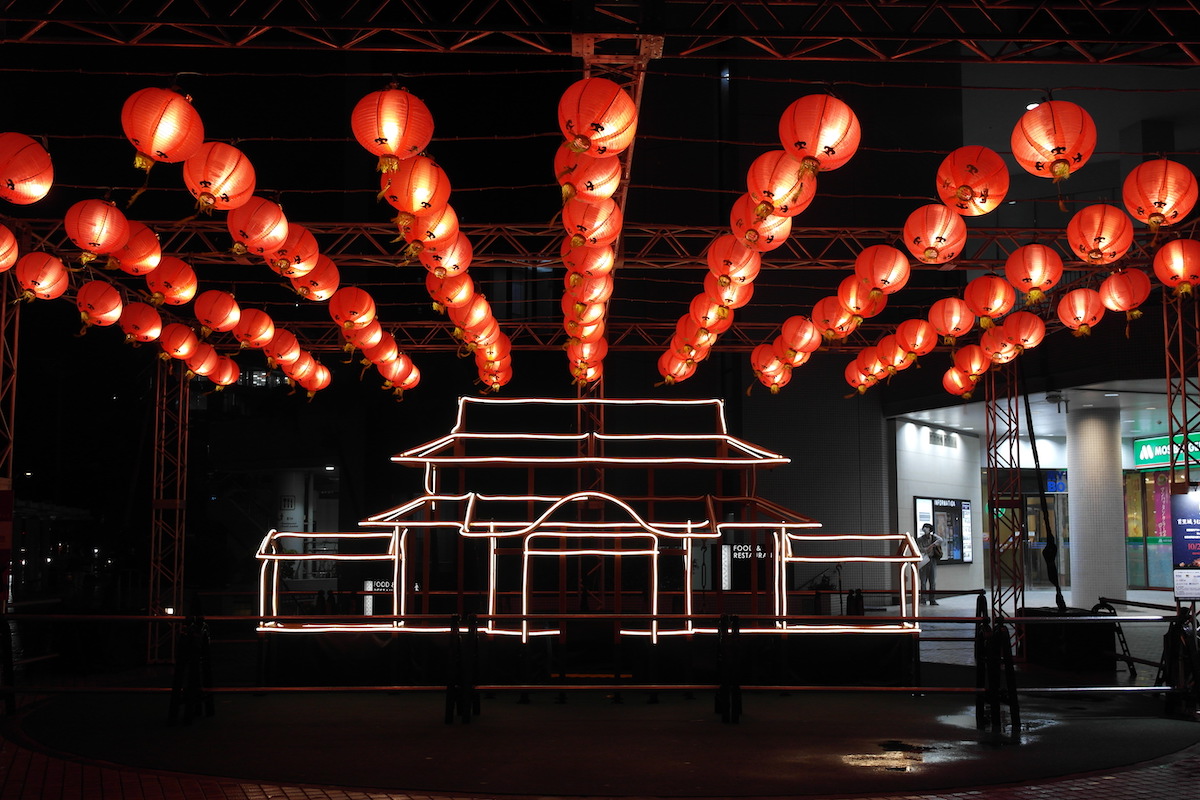
Shuri Castle Reconstruction Efforts and Issues
The Governor of Okinawa announced that the reconstruction of Shuri Castle is planned to be the fastest one yet, projected to be completed by 2026. With a slogan, “Reconstruction on display,” all stages of the reconstruction will be showcased. The castle complex became open to the public soon after the fire and visitors were invited to see part of the damage and the cleaning process.
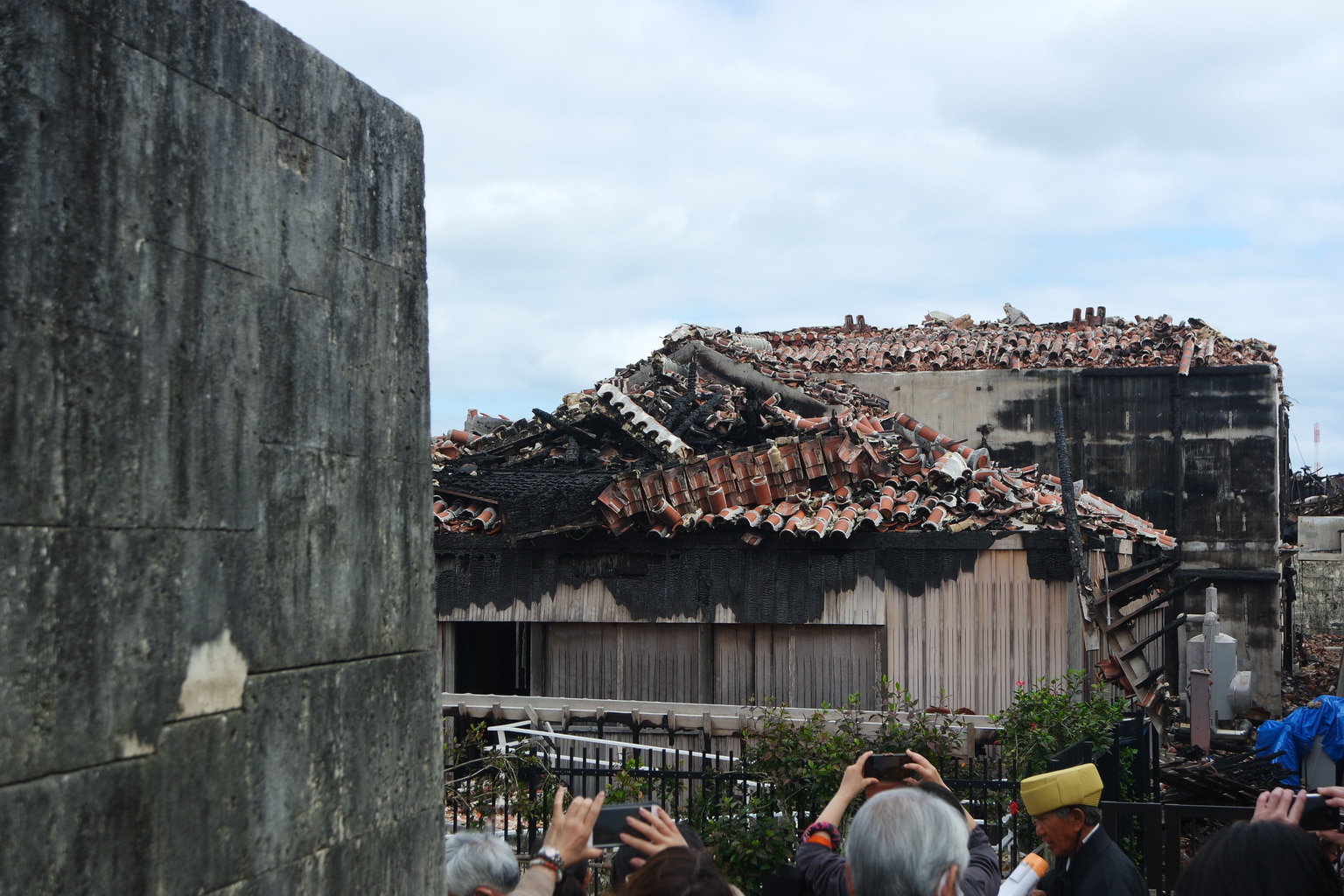
On display behind glass walls is part of the original foundations of the now burned down Seiden (Main Hall). These ancient stone foundations are part of the World Heritage registration and they show the signs of previous destruction and reconstruction of the Main Hall. This area was opened to the public on June 12, 2020.
After cleaning the rubble, one of the first on-site activities was salvaging and cleaning red kawara roof tiles from the burned buildings, for which volunteers were recruited in March 2020. After the fire, the Okinawa Prefecture Ryukyu Red Tile Stucco Construction Cooperative issued a request for the preservation and reuse of as many red tiles from the fire as possible. They said that these unique Okinawan tiles are precious, and there is a tradition of reusing them. Above all, they feared that making the estimated 25,000 tiles needed would slow down the reconstruction. Currently, Okinawan artisans are producing brand new tiles, and there is an ongoing call for more volunteers to help with roof tile cleaning until December 24, 2020.
In addition to roof tiles, wood procurement has also posed a challenge. The reconstruction calls for 175 logs for main pillars for the Seiden alone, and the amount of all necessary wood is yet to be determined. In the last Shuri Castle reconstruction, special import permission was issued to Taiwanese cypress could be imported, the same type of wood used for castle repairs in the 20s and 30s. Okinawa Times reports for this reconstruction Japanese cypress is to be used, sourced from Okinawa and other parts of Japan. However, there are concerns about whether enough wood can be sourced within the time limit without causing environmental damage.
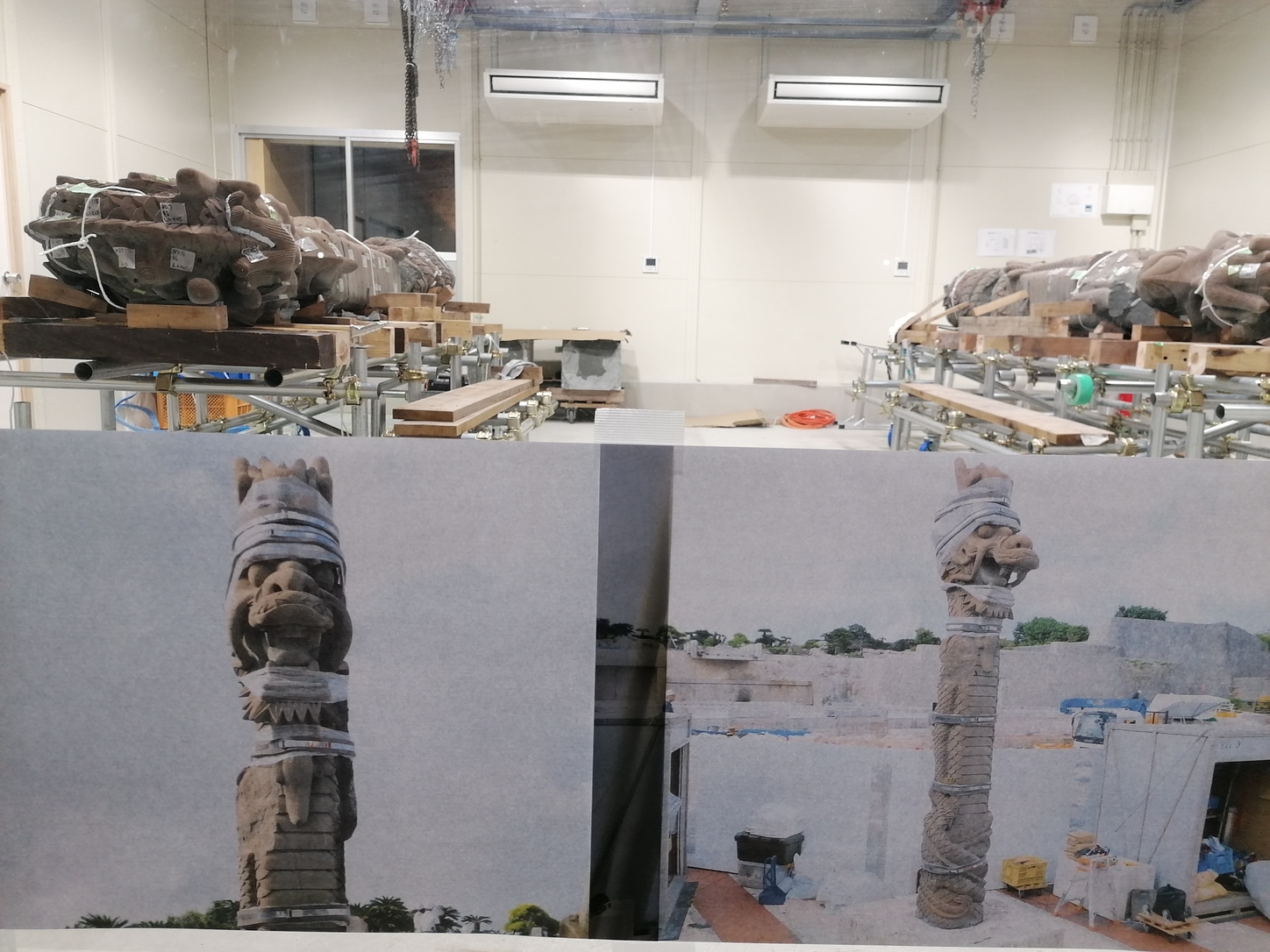
In history circles, there is an ongoing debate about the placement of the dragon pillars that survived the fire with some damage. Reconstructing the castle as it was, means the dragon pillars in front of the Main Hall will be facing each other. However, some people believe this is a chance to place them facing forward, as they were in the Shuri Castle before it was destroyed in World War II.
However, historians believe that this was a mistaken placement during the Meiji period. Travis Seifman, a postdoctoral researcher at the Historiographical Institute at the University of Tokyo, explains that most scholars believe that the dragons should be facing each other as per surviving Ryukyu Kingdom records and drawings. However, some locals remember the pre-war misplacement of them facing forward, in addition to feeling that position is more natural, just like Shisa lions and Komainu dogs are placed facing forward. The work on the massive dragon pillars is ongoing and can be observed behind the glass windows.
The final improvement on the agenda, to prevent future disasters, is installing fire sprinklers and other fire prevention gear on the castle premises.
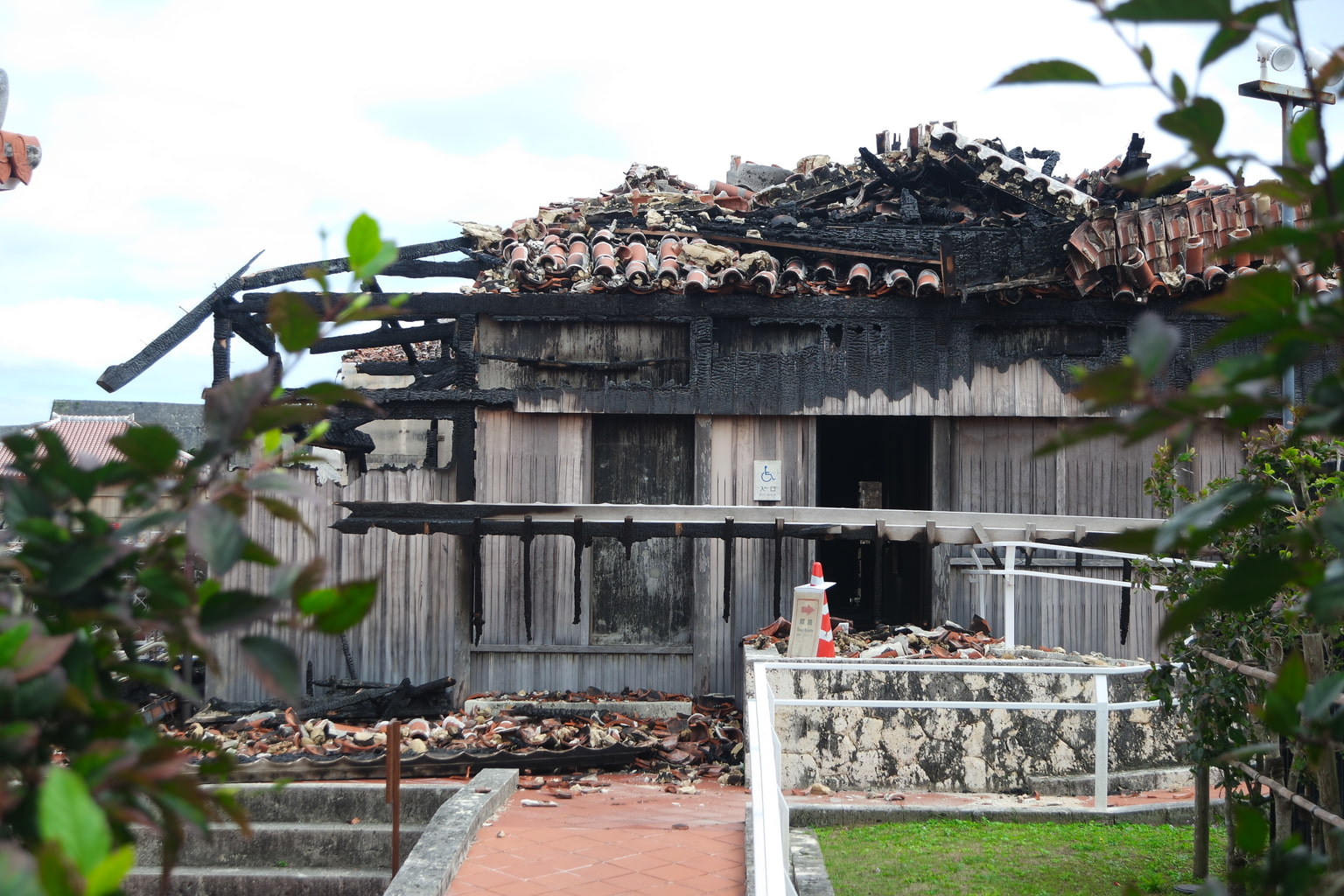
How to help
Even a visit to Shuri Castle counts as support, seeing the ongoing reconstruction and keeping the tourist site lively. Despite the fire damage, the outer walls and famous castle gates are intact. The exterior walls called ‘gusuku,’ built in a Ryukyuan architectural style that differs from Japanese castles, are worth a visit alone.
If you want to contribute to the castle’s reconstruction efforts, there are donation funds you can pay into. More information here.
If you want to volunteer for the roof tile cleaning, you need to be at least 15 years old and able. There are more details about how to apply at the Shuri Castle website.
All images by Zoria Petkoska
Updated On April 25, 2021

